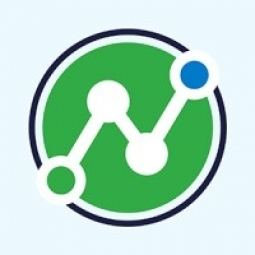Download PDF
How SIEMENS Drastically Reduced Cost with Managed BI Applications
Technology Category
- Analytics & Modeling - Real Time Analytics
Applicable Industries
- Electronics
Applicable Functions
- Discrete Manufacturing
- Logistics & Transportation
Use Cases
- Predictive Maintenance
- Supply Chain Visibility
Services
- Software Design & Engineering Services
- System Integration
The Challenge
The Visual Analytics Group within Siemens was tasked with providing actionable reporting solutions to the entire Siemens organization across different departments and lines of business. They needed to maintain a balance between governance and self-service capabilities. Siemens needed one framework that could be used for their multiple use cases at scale, such as customer satisfaction surveys, logistics processes, financial reporting and more. They needed to provide users with the self- service capabilities they needed to easily access approved data for analysis and decision making, all while maintaining their users’ focus on the metrics that matter the most and ease of use. Additionally, the solution needed to easily integrate into existing Siemens systems for a seamless user experience.
About The Customer
Siemens is a global powerhouse focusing on the areas of electrification, automation and digitalization. One of the world’s largest producers of energy-efficient, resource-saving technologies, Siemens is a leading supplier of systems for power generation and transmission as well as medical diagnosis. In infrastructure and industry solutions, the company plays a pioneering role. The Visual Analytics Group within Siemens is tasked with end-to-end reporting solutions and consulting for all of Siemens internal BI needs. They are the BI experts within the organization.
The Solution
Siemens started by looking for the best fit BI software in the market and zeroed in on Dundas BI. Dundas BI stood out due to the incredibly seamless integration capabilities it offered along with a set of capabilities that offered the ability to deploy a dedicated solution for many different users. Siemens was able to create an internal managed BI application based on Dundas BI that is currently being used by thousands of people world-wide and includes 35 different projects. The full BI stack is available to the entire organization allowing for seamless data integration, fast and easy-to-use reporting for all levels and enhanced collaboration. They even offer mobile accessibility allowing users to interact with and view their data from any device. In addition, Siemens Visual Analytics Group extended the solution using Dundas BI open APIs, creating custom solutions for unique exports to PowerPoint and custom mobile applications for consumption on tablets.
Operational Impact
Quantitative Benefit
Related Case Studies.

Case Study
Remote Temperature Monitoring of Perishable Goods Saves Money
RMONI was facing temperature monitoring challenges in a cold chain business. A cold chain must be established and maintained to ensure goods have been properly refrigerated during every step of the process, making temperature monitoring a critical business function. Manual registration practice can be very costly, labor intensive and prone to mistakes.

Case Study
Cloud Solution for Energy Management Platform-Schneider Electric
Schneider Electric required a cloud solution for its energy management platform to manage high computational operations, which were essential for catering to client requirements. As the business involves storage and analysis of huge amounts of data, the company also needed a convenient and scalable storage solution to facilitate operations efficiently.

Case Study
Leveraging the IoT to Gain a Competitive Edge in International Competition
Many large manufacturers in and outside Japan are competing for larger market share in the same space, expecting a growing demand for projectors in the areas of entertainment, which requires glamor and strong visual performance as well as digital signage that can attract people’s attention. “It is becoming more and more difficult to differentiate ourselves with stand-alone hardware products,” says Kazuyuki Kitagawa, Director of Service & Support at Panasonic AVC Networks. “In order for Panasonic to grow market share and overall business, it is essential for us to develop solutions that deliver significant added value.” Panasonic believes projection failure and quality deterioration should never happen. This is what and has driven them to make their projectors IoT-enabled. More specifically, Panasonic has developed a system that collects data from projectors, visualizes detailed operational statuses, and predicts issues and address them before failure occurs. Their projectors are embedded with a variety of sensors that measure power supply, voltage, video input/ output signals, intake/exhaust air temperatures, cooling fan operations, and light bulb operating time. These sensors have been used to make the projector more intelligent, automatically suspending operation when the temperature rises excessively, and automatically switching light bulbs. Although this was a great first step, Panasonic projectors were still not equipped with any capability to send the data over a network.








